Apple Announces First Computers with M1 Processors
MacBook Air, 13-inch MacBook Pro and Mac Mini get Arm-based processors.
Apple has taken its first steps to move its Mac computers onto its own Arm-based processors and starting its two-year transition away from CPUs from Intel. Apple announced the MacBook Air, 13-inch MacBook Pro and Mac Mini with the new M1 chip, which can be ordered today and will ship next week.
John Ternus, VP of hardware engineering detailed the transition to the "next generation of Mac," coming over the next "couple of years."
The first chip is the M1, which Apple's chip lead Johny Srouji said would create a "completely different class of product. It would replace the separate chips for the CPU, I/O, and more. It also includes memory on the chip.
It's a 5nm chip with 16 billion transistors. It has 8 cores, four for power and four for efficiency. Srouji said the high-performance cores are the world's fastest and deliver the best performance per watt. It has a 10W thermal envelope.
Additionally, Srouji detailed the chip's integrated graphics, an 8-core GPU with 128 compute units. He said it's the world's fastest integrated graphics. There's also a 16-core neural engine for machine learning. It also houses the Secure Enclave for security.

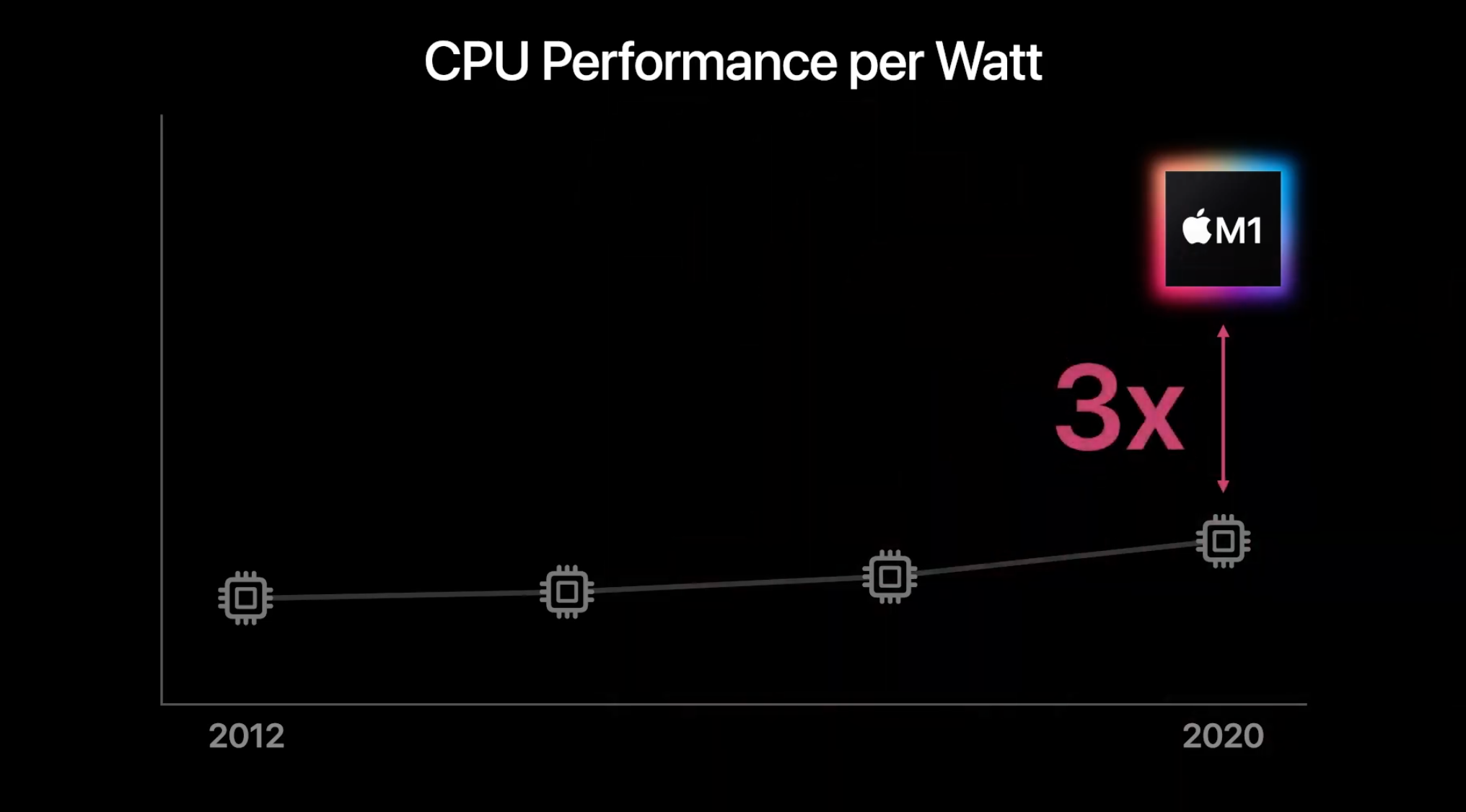
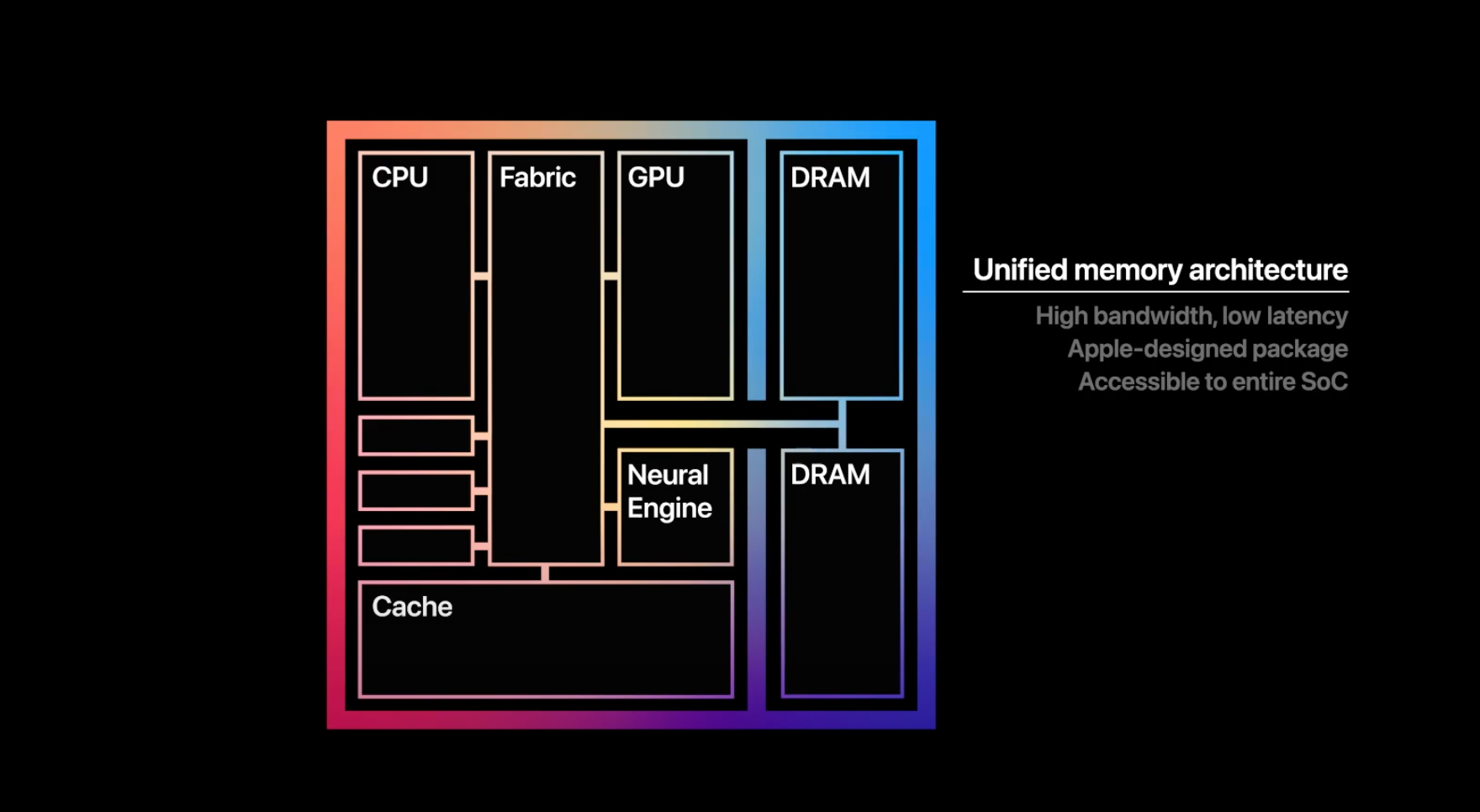
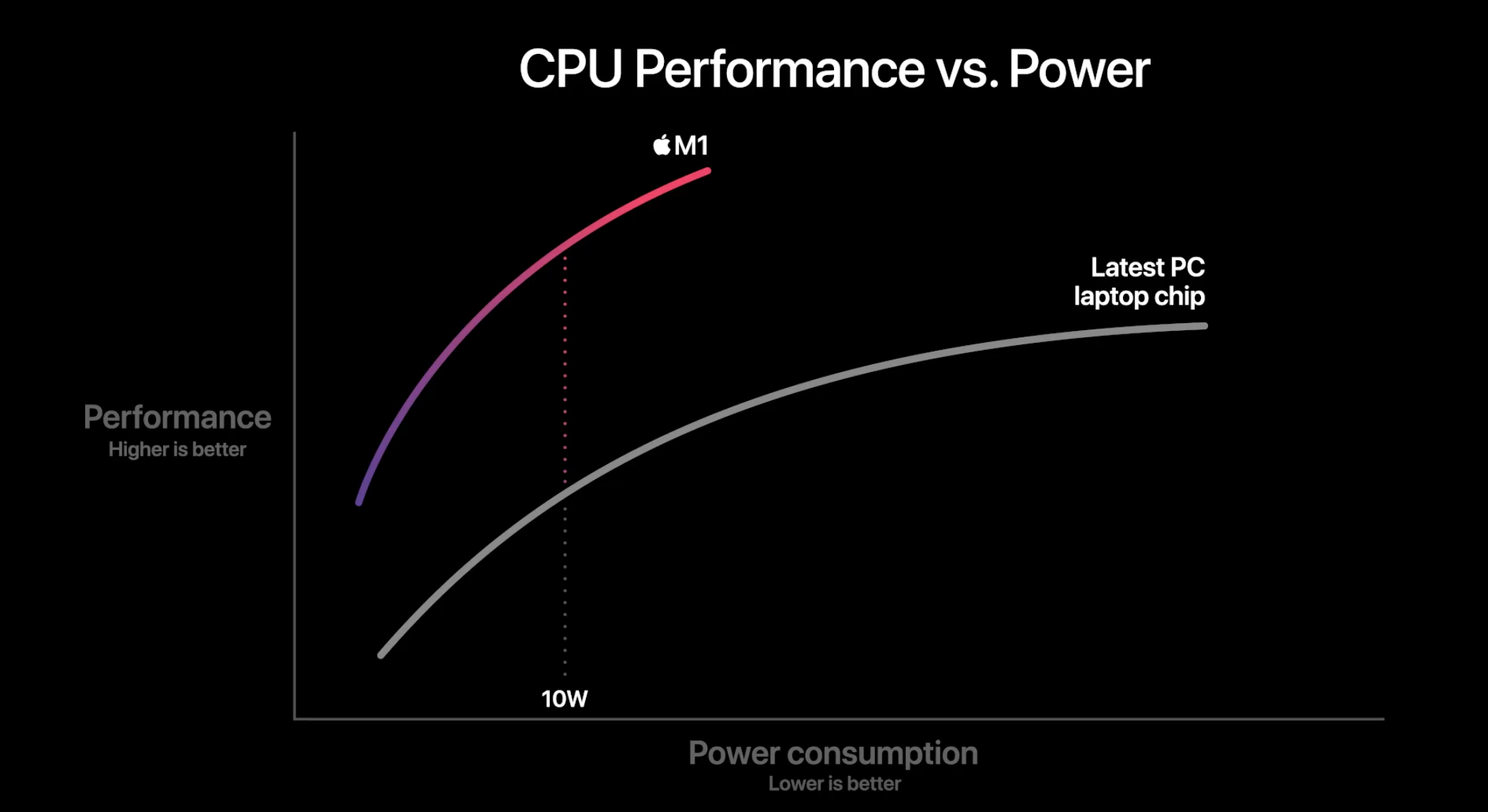
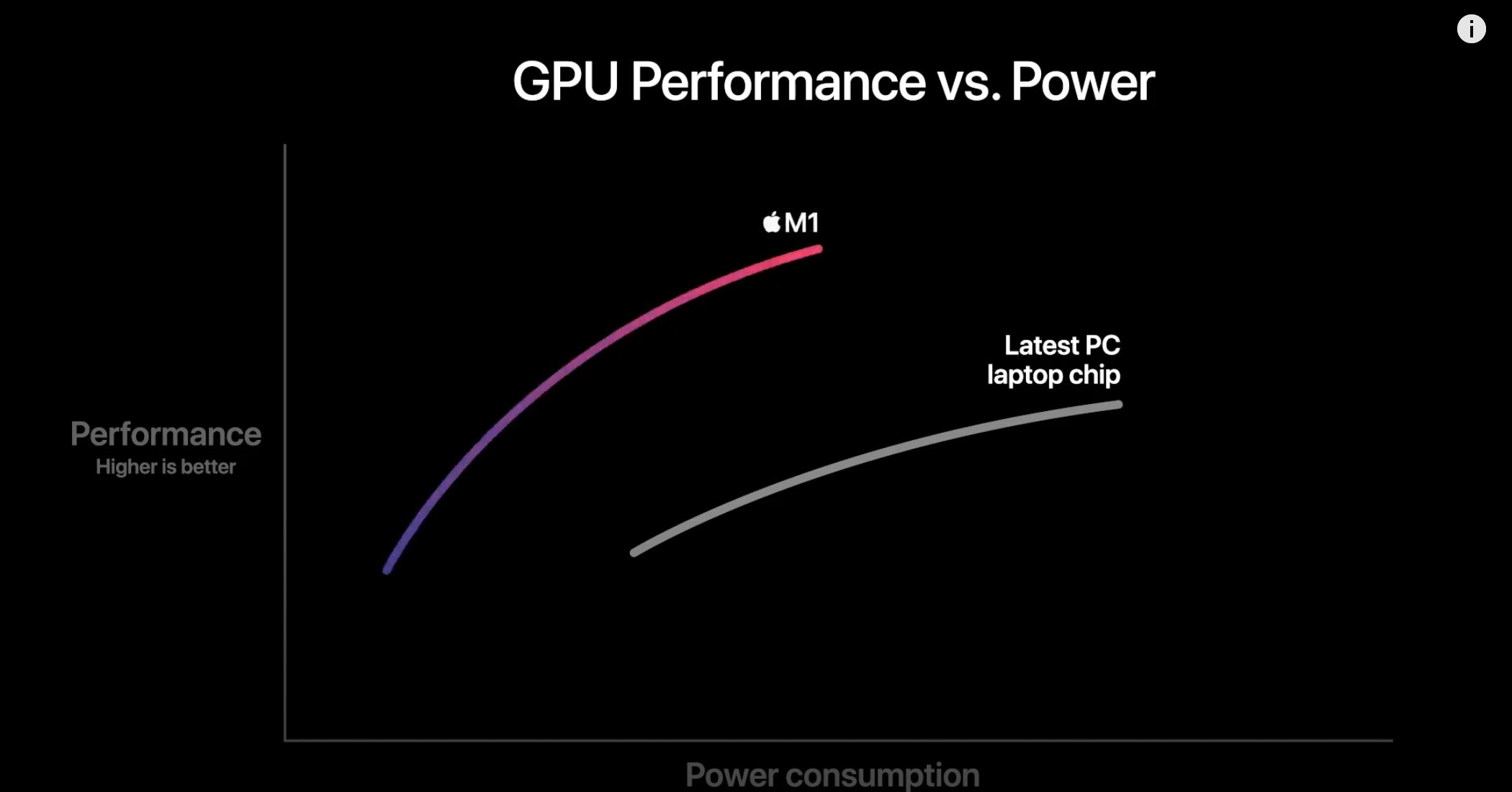

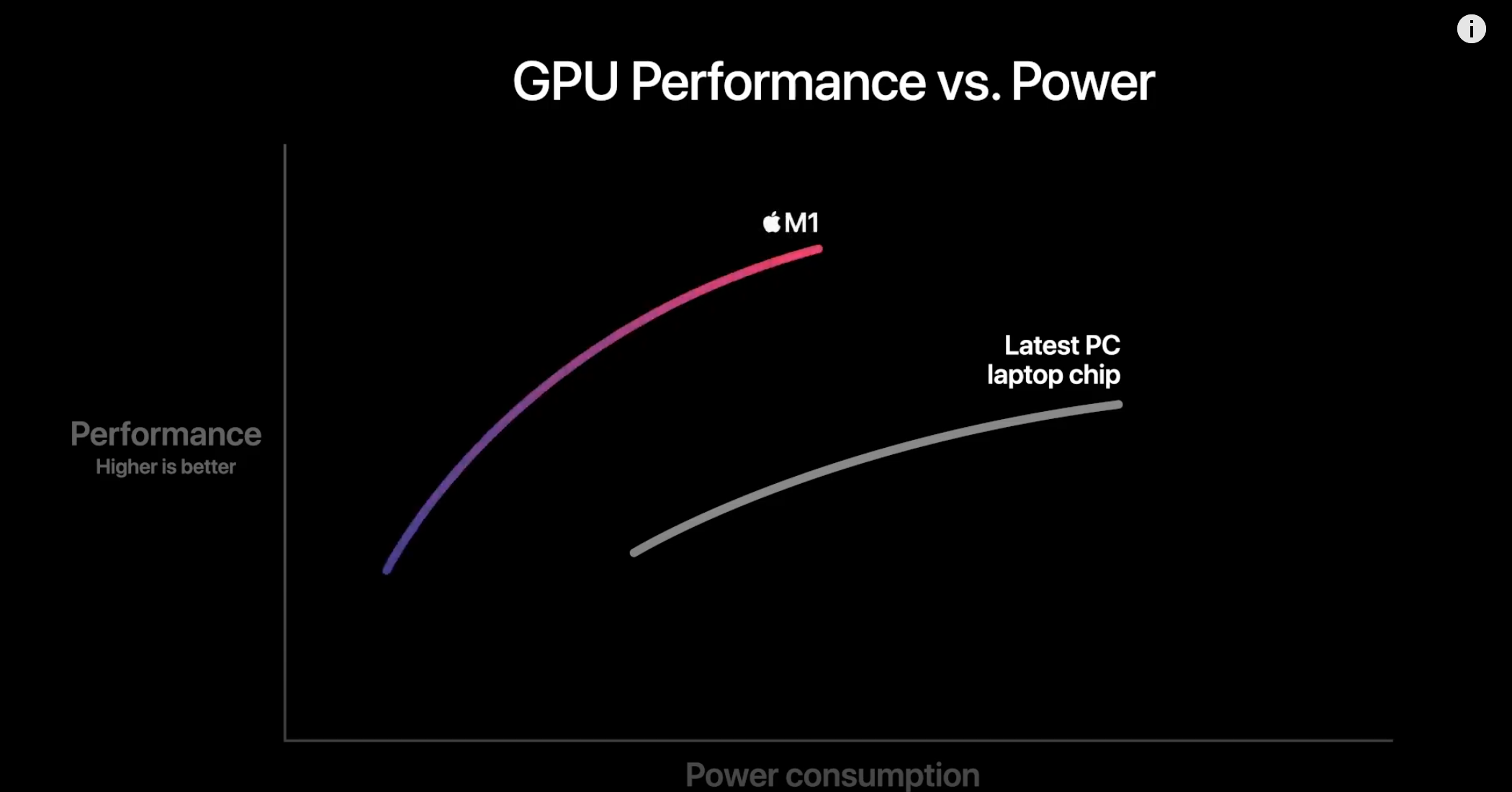

Apple MacBook Air with M1
Apple also detailed the first Macs with M1. The first is the MacBook Air, starting at $999.

It has a 3.5x faster CPU in the M1, which was being compared to an Intel Ice Lake processor. Apple also claimed a 5x improvement in integrated graphics.
The design has no fan, so it can run silently. Apple is also promising 15 hours of wireless web browsing and 18 hours of video playback, claiming the longest battery life of any MacBook Air.

MacBook Pro (13-inch) with M1
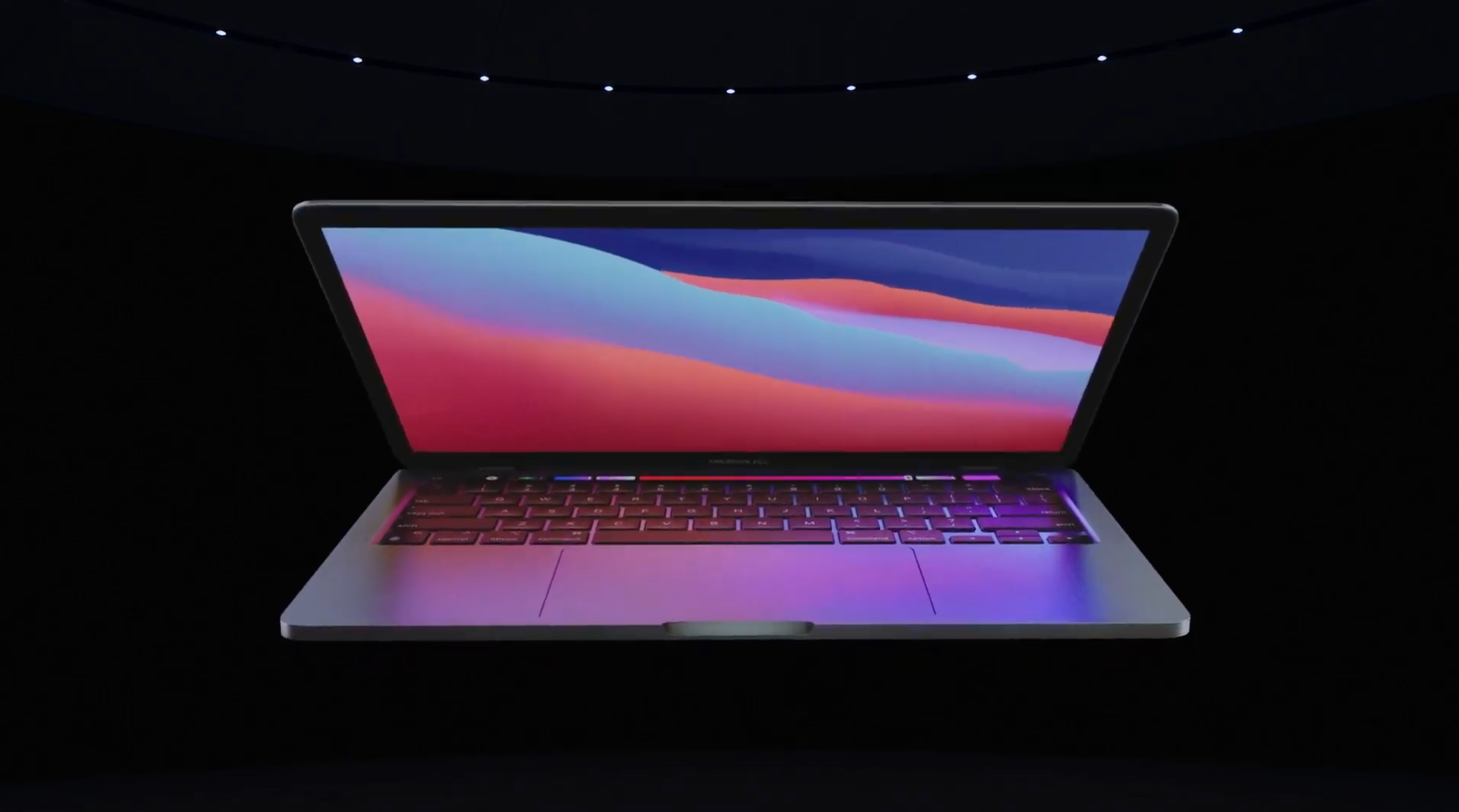

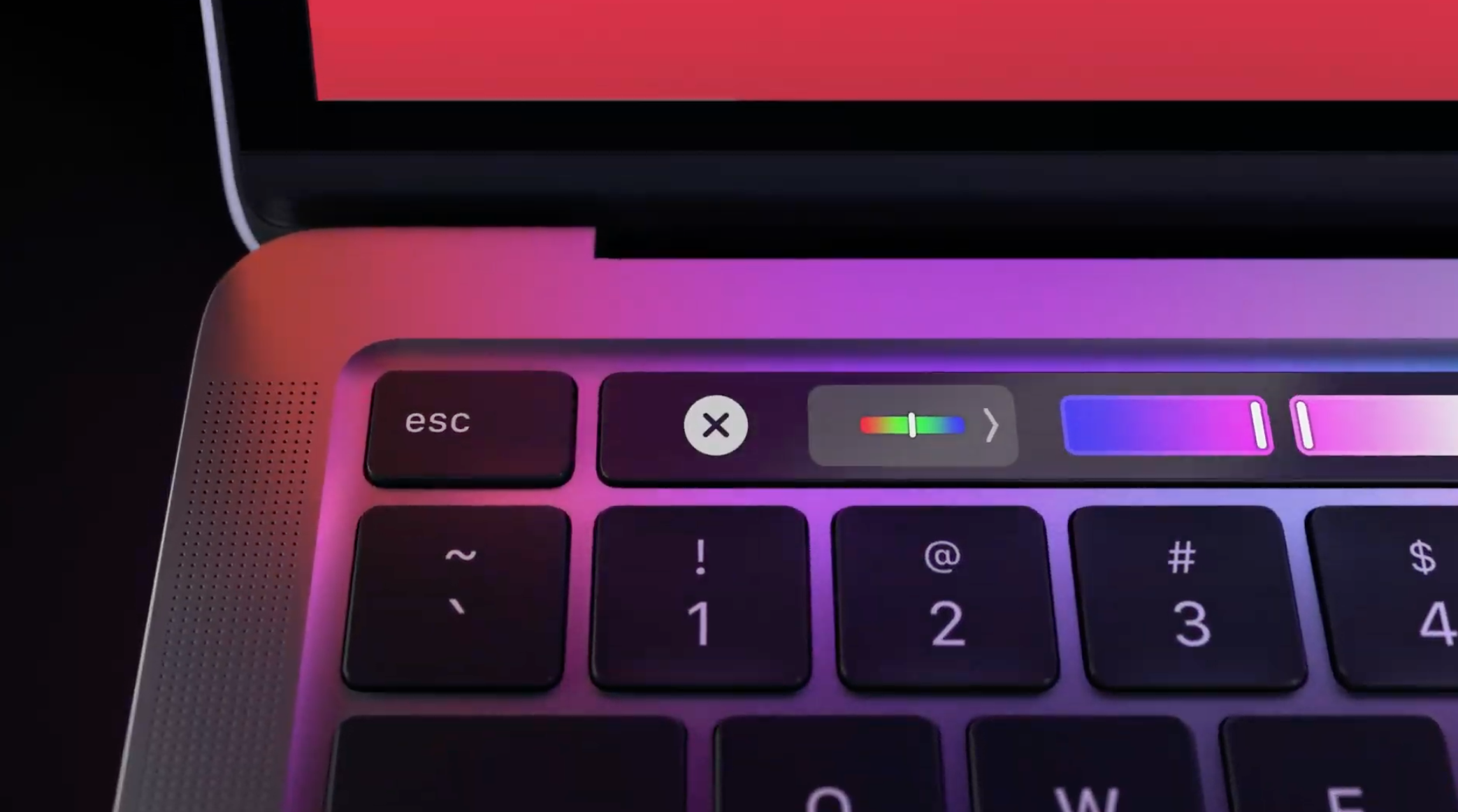
The MacBook Pro will get the M1, starting at $1,299
Apple is claiming faster performance than ever on the CPU, with a GPU up to five times faster over previous 13-inch MacBook Pros.
Unlike the MacBook Air, the Pro has active cooling. Apple claims that the battery life goes up to 17 hours of web browsing and up to 20 hours of video playback, for the longest battery life ever on a Mac.
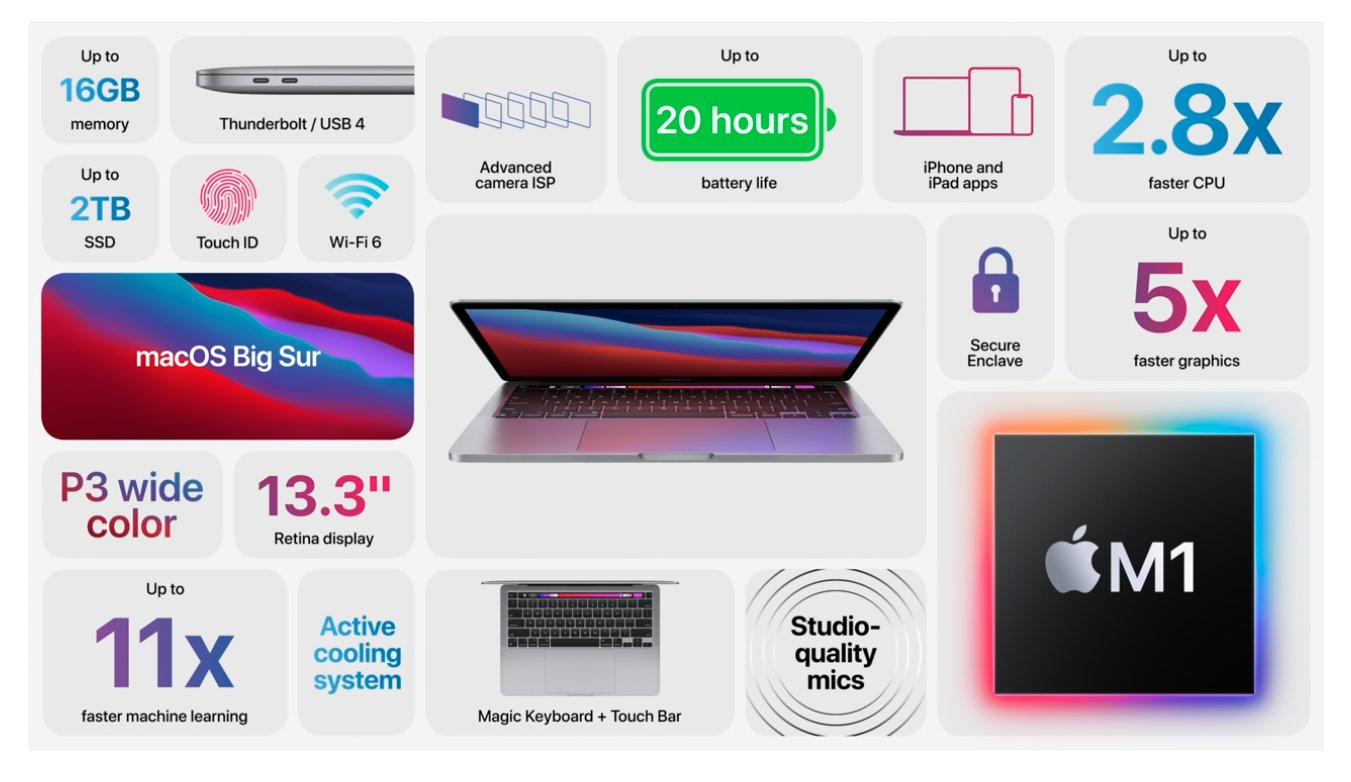
The new Pro has studio-quality microphones, and continues to use the Touch Bar. Like the MacBook Air, it has a faster image sensor. There are two Thunderbolt 4 ports for connectivity, including Apple's XDR monitor. It's not much of a redesign, though, as Apple said it uses the same chassis.
Apple claimed that it's faster than 98% of PC laptops sold in the last year.
Finally, Apple is bumping up the camera, with noise reduction, improved white balance and ML-enhanced face detection. The 13-inch Retina display supports P3-wide color.
Get Tom's Hardware's best news and in-depth reviews, straight to your inbox.
Mac Mini with M1
Apple is also updating the Mac Mini desktop with M1. Apple claims three times as much performance and six times the graphics over the previous Mac Mini. In fact, Apple positioned it for gaming and game development.
It starts at $699, a $100 reduction from the previous generation.
The company claimed the new Mini is five times faster than a typical PC desktop sold today, though that includes a lot of office computers.

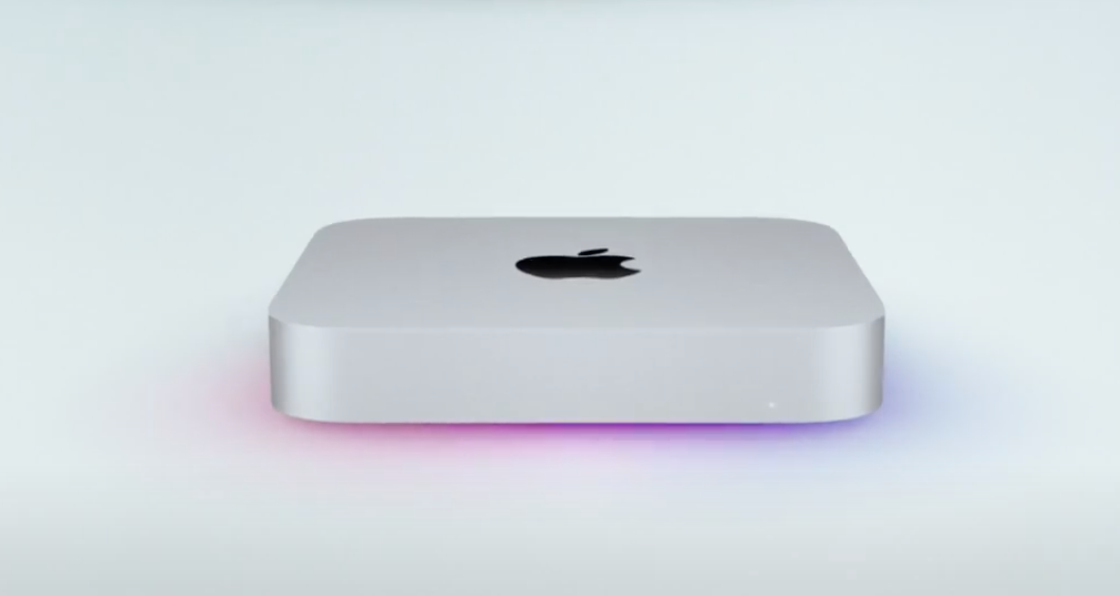
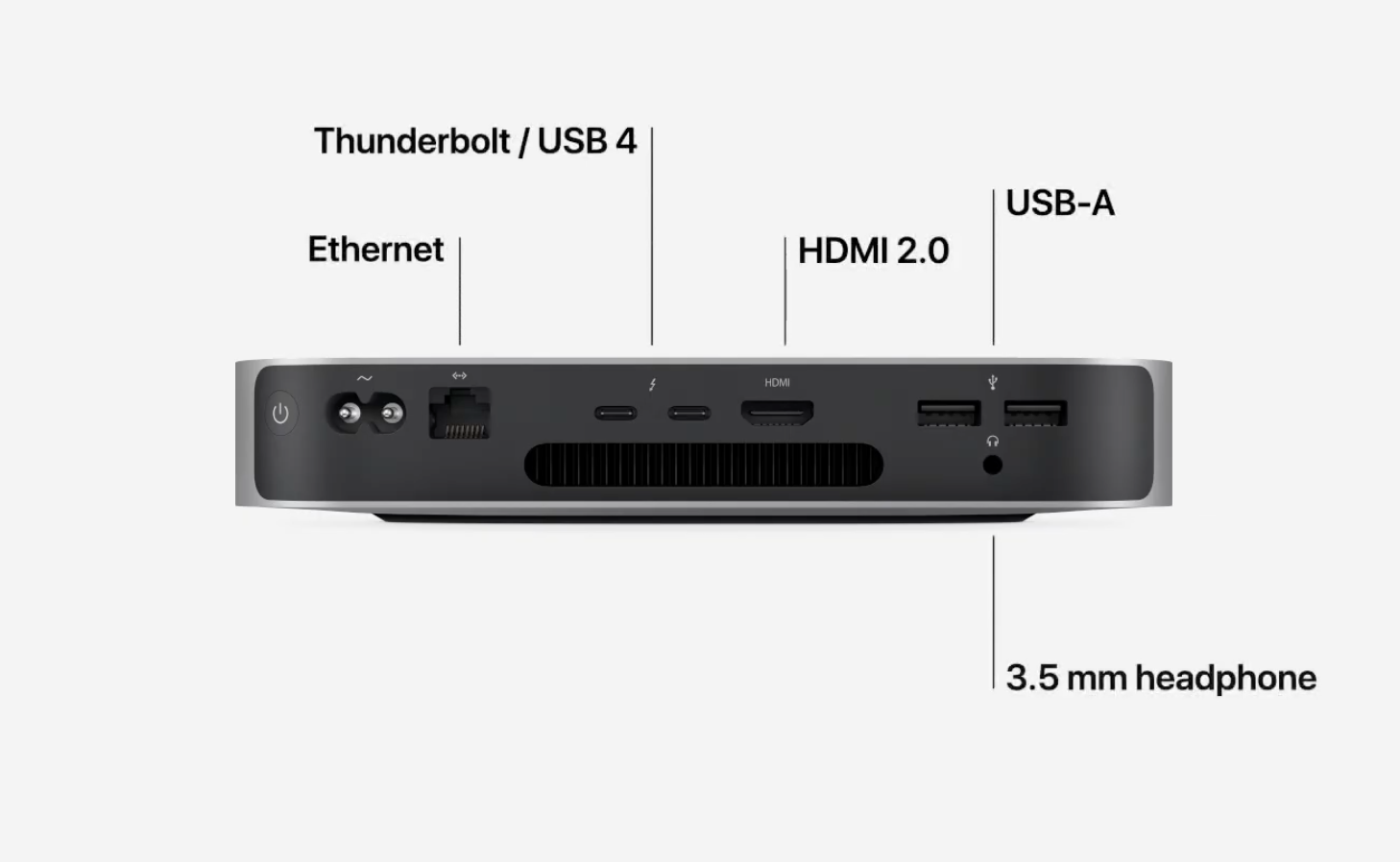
This design has a fan. Connectivity includes Thunderbolt, USB 4, Ethernet and HDMI.
Apple initially announced the transition to Arm at WWDC, and provided developers with transition kits based on a Mac Mini with an A12Z, 16GB of RAM, and a beta of Big Sur.
Nvidia announced in September that it would be acquiring Arm from Softbank to the tune of $40 billion, but it's not clear how much regulatory interference that may face or whether that will lead Apple to adjust its plans.
macOS Big Sur and Rosetta 2
Apple's Craig Federhigi covered macOS Big Sur. He suggested that with M1, launching apps is faster, and that the Safari browser is 1.5 times faster at running Javascript and almost 2x more responsive. Big Sur will release on Thursday.
Apple has updated apps for M1, including Keynote, Pages, iMovie and GarageBand, as well as more complex apps like Final Cut Pro.
"Universal Apps" have a native binary for both Apple Silicon and Intel processors, so that it can run on any Mac.
Photoshop will be among the first Universal Apps, coming early next year.
The other apps will run on Rosetta 2, which translates Intel instructions to Apple Silicon instructions, so you should still be able to use apps that don't get updates at launch.
Additionally, iPad and iPhone apps will run on macOS, thanks to support for similar chip architectures.

Andrew E. Freedman is a senior editor at Tom's Hardware focusing on laptops, desktops and gaming. He also keeps up with the latest news. A lover of all things gaming and tech, his previous work has shown up in Tom's Guide, Laptop Mag, Kotaku, PCMag and Complex, among others. Follow him on Threads @FreedmanAE and BlueSky @andrewfreedman.net. You can send him tips on Signal: andrewfreedman.01
-
javiindo I understrand now why all new AMD APU still have Vega GPU architecture. Because Apple wanted to be the first with a RDNA GPU. Otherwise, if the specs are true, this is very impressive. Another hit to Intel (and to AMD by the way).Reply -
gggplaya Replynofanneeded said:I dont believe any of their claims . Also , They cant compete in the pro line ..
Actually they can in niche categories. Like for photographers and videographers. As long as they can get Adobe, Divinci, and similar programs to integrate their software with their M1 chips hardware accelerators, then yes they can compete. Art and Design is still where Apple has their biggest marketshare in the professional market.
They might also pick up some business people. Let's face it, most business people only need email, skype meeting type of apps, office apps and web browsing, which the M1 chip will do just fine. They don't care what type of processor is in it. But the reason they might pick up marketshare here is the insane battery life on these laptops. When you're on a business trip, or all day meetings etc... Battery life matters! -
nofanneeded Replygggplaya said:Actually they can in niche categories. Like for photographers and videographers. As long as they can get Adobe, Divinci, and similar programs to integrate their software with their M1 chips hardware accelerators, then yes they can compete. Art and Design is still where Apple has their biggest marketshare in the professional market.
No they cant , the Pro line could use RDNA2 chips from AMD with something like 20 Tflops performance . there is no way they can compete against that.
Also they are asking alot for an ARM chip Notebook , no one with a single brain cell would pay the prices they are demanding for the pro line with that cheap ARM chip. the best ARM chips are cheap , in the $100-$150 price range unlike Intel $250-$450 price range.
More Over , it is clear their ARM chip max RAM is 16GB .. this is low for professional work in 2020 . keep in mind that this is unified memory , so with like 8GB going for GPU you are left only with 8 GB for system ?
this is a JOKE ... -
Murissokah I'm curious as to how well Apple can execute x86/ARM transition. Microsoft tried it with Windows RT with dismal results. Apple has a more controlled environment, but it's still a huge task. People who buy a very expensive laptop might not react well if they keep hitting compatibility walls, and if it takes too long to fix that the product will be burnt already.Reply -
gggplaya Replynofanneeded said:No they cant , the Pro line could use RDNA2 chips from AMD with something like 20 Tflops performance . there is no way they can compete against that.
Also they are asking alot for an ARM chip Notebook , no one with a single brain cell would pay the prices they are demanding for the pro line with that cheap ARM chip. the best ARM chips are cheap , in the $100-$150 price range unlike Intel $250-$450 price range.
More Over , it is clear their ARM chip max RAM is 16GB .. this is low for professional work in 2020 . keep in mind that this is unified memory , so with like 8GB going for GPU you are left only with 8 GB for system ?
this is a JOKE ...
Do you edit photos? You don't need any of power you're speaking of for that. Being a "PROFESSIONAL" only means that you get paid for the work you do. It doesn't mean that you need to biggest, baddest, most powerful equipment possible. Especially at the expense of battery life. When you're out, away from the office, actually doing your work, sometimes battery life with more than adequate power is what you need to actually accomplish your work, not an ultra beast of a computer. As long as the photo software is quick and snappy, photographers don't care what's under the hood. If they start to notice lag as they move through libraries, or click to expand a photo. Then yes, they care what's under the hood.
It remains to be seen if any video editing bottlenecks exist, but if hardware acceleration integration is good. These computer will be fine. I personally wouldn't use it for professional use because I think CPU encoding is still far cleaner than hardware accelerated encoding. Especially AMD's flavor of VCE which is inferior to Nvidia's turing NVENC. -
nofanneeded Replygggplaya said:Do you edit photos? You don't need any of power you're speaking of for that. Being a "PROFESSIONAL" only means that you get paid for the work you do. It doesn't mean that you need to biggest, baddest, most powerful equipment possible. Especially at the expense of battery life. When you're out, away from the office, actually doing your work, sometimes battery life with more than adequate power is what you need to actually accomplish your work, not an ultra beast of a computer. As long as the photo software is quick and snappy, photographers don't care what's under the hood. If they start to notice lag as they move through libraries, or click to expand a photo. Then yes, they care what's under the hood.
It remains to be seen if any video editing bottlenecks exist, but if hardware acceleration integration is good. These computer will be fine. I personally wouldn't use it for professional use because I think CPU encoding is still far cleaner than hardware accelerated encoding. Especially AMD's flavor of VCE which is inferior to Nvidia's turing NVENC.
It is not only about encoding , it is about real time Editing which uses the GPU to 100% all the time.
the Majority of Mac users buy it for Final Cut pro x , almost all youtubers prefer it as well over Adobe premiere pro .
You need at least 32 GB of RAM for that for heavy editing in 4K.
and I am talking about the "pro" note books line only .. which is supposed to be very powerful .
And you are mistaken about AMD Acceleration in Final Cut pro X , it does make a huge difference in real time editing. -
NightHawkRMX Impressive, but it still can't run any of the applications I use, so it could have the performance of a 3990x and i wouldn't care.Reply -
hotaru.hino Reply
Apple did manage well from the PowerPC to x86, though in that case, they knew the PowerPC in and out enough to make a competent compatibility layer/emulator.Murissokah said:I'm curious as to how well Apple can execute x86/ARM transition. Microsoft tried it with Windows RT with dismal results. Apple has a more controlled environment, but it's still a huge task. People who buy a very expensive laptop might not react well if they keep hitting compatibility walls, and if it takes too long to fix that the product will be burnt already.
In this case though, since Intel really hates it when someone makes an x86 emulator, it's possible Apple's developed their software stack so well that it's easy to compile an app for one platform or the other. Something akin to how Microsoft has Xbox 360 compatibility on the Xbox One.
There's also the question of how many apps in widespread use in Apple's ecosystem come from the store than from a website.